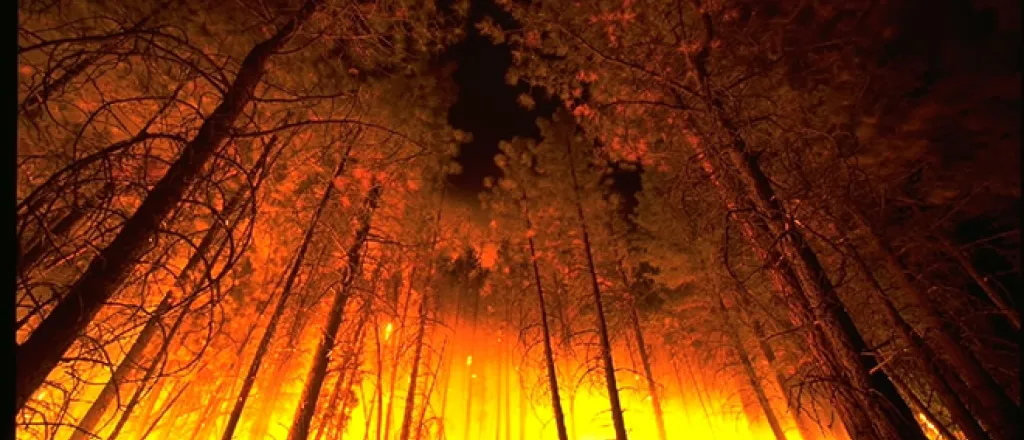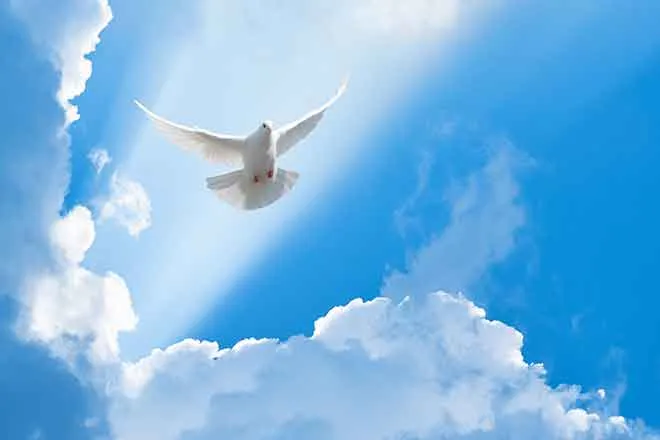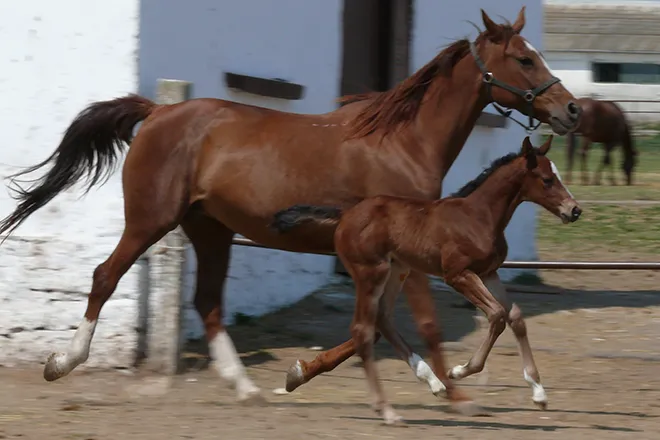
How indigenous knowledge reconnects us all to fire
(Yes! Media) “Our human relationship with fire goes back thousands and thousands of years,” says Damon Panek, wildland fires operations specialist for the Fond du Lac Band of Lake Superior Chippewa and enrolled member of the Mississippi Band of White Earth Ojibwe. The Ojibwe people of Lake Superior Chippewa alone have more than 700 life-sustaining uses for fire, and Oshgikin, the spirit of fire, is defined as “the thing or mechanism that makes things new.”
Since time immemorial, the Great Lakes Anishinaabeg have used fire to manage the landscape across what is now called North Dakota, Minnesota, Wisconsin, Michigan, and parts of Canada. Despite fire’s universal value to humanity, European settlement put an abrupt stop to the traditional practice of controlled burns, deeming fire an entirely destructive force. The resulting damage has rippled across centuries. The wildfires that currently rage across western North America are post-colonial scars of that ideologically driven mismanagement.
“It only takes a generation or two to lose knowledge,” Panek says. Traditional knowledge of fire handling, fire-related language, and the fire-adapted landscape are just a few of the cultural pillars nearly lost to time. Yet, in the past several years, the restoration of fire knowledge and fire-dependent ecosystems has gained traction thanks to Indigenous leadership.
Panek, for example, spearheaded the return of prescribed burns to Stockton Island (or its Ojibwe name, Wii-saa-ko-day-wa-ning, meaning “the place that has been burned”). The island, located in Lake Superior, off the coast of northern Wisconsin, is a traditional site for blueberry gathering. Indigenous efforts like Panek’s have sparked interest in challenging the American fear of fire around the Great Lakes and beyond.
“The forests that we see today are pretty colonized. … That’s not what our ancestors would’ve known,” Panek says. “Our ancestors used fire to build landscape, fire-adapted landscape—or fire-dependent landscapes, in some places. And those landscapes influenced our identity, our language, our way of thinking, our place in this world.”
A Colonized Forest
Just west of Lake Superior’s far western shore sits the University of Minnesota’s Cloquet Forestry Center. It has been a hub of forestry research and education since it was established in 1909, and researchers here are leading the effort to reconcile relationships with local tribal people through fire management.
On a recent tour of the Forestry Center, Evan Larson, professor of environmental sciences at the University of Wisconsin, Platteville, points to the cross-section of a tree. Each of the lobes growing concentrically around the original trunk is separated by a thin layer of healing sap and represents a fire event. The tree survived every human-made fire in its lifetime using its specially adapted bark and healing mechanisms. In this way, the tree has thrived in the landscape since 1793.
“This big lobe of healing wood that goes from that last fire out ’til today: That’s that fire-free interval,” Larson says. “That was the period of removal, of the expression of allotment and land displacement, fire suppression.” It represents the fire-free growth the tree experienced for the latter half of its existence.
“These trees have been waiting 115 years [for fire],” says Kyle Gill, forest manager and research coordinator, as he stands in a fire-treated portion of the Forestry Center’s research area known as Camp 8. The plot is noticeably more open than the adjacent, untreated portion of the forest. Ferns have sprung up from the soil, sunlight floods the forest floor, and the breeze sings in a pitch distinct from the plot with a denser composition, developed in the absence of regular fires for more than a century.
In the absence of fire, the native red pines in Camp 8 are being replaced by hardwoods. This leads to a denser forest composition made up of plants that are more shade-tolerant, choking out sun-loving groundcover species that were once dominant below the red pines in the area, such as blueberries, honeysuckle, and sweet fern.
This has transformed the landscape, threatening local tribal knowledge and traditions. Forested ecosystems in the Great Lakes region are uniquely poised to welcome back fire treatment. In fact, they’re built for it.
One of the local native species, red pine (also called Norway pine) needs fire for regeneration. Its bark thickness, elevated crown, life cycle, and physiology all evolved in response to the regular presence of fire. Rejecting fire altogether endangers the historic forests that are home to species like the red pine, and the ecocultural lifeways associated with them, including the management of hunting lands and preparing sites for berries.
More Than a Destructive Force
Evidence of controlled fire’s benefits and its crucial value to Native populations is documented and preserved in oral tradition. But fear and misunderstanding have caused the United States to take a firm opposition to the practice since the very beginnings of European settlement.
In 1894, the Great Hinckley Fire killed 418 people in Northern Wisconsin. Just two decades later and 60 miles away, in 1918, the Cloquet Fire killed 559. These are still the second and third deadliest wildfires in U.S. history. These harrowing events, along with the Forest Service’s introduction of Smokey Bear in the 1940s to inspire social anti-fire sentiments, solidified public opposition to fire in all its forms.
And that sentiment flared up with a vengeance during World War II. “Until we smash the Axis, every manmade forest fire is an enemy fire,” warned the U.S. Government Campaign Plan for Wartime Forest Fire Prevention in 1943. At that time, the U.S. was seeing an average of 140,000 to 220,000 forest fires every year. Ninety percent of them were human-made, caused by “careless smokers” and campers, along with farmers looking to develop better pasturage without the means or know-how to control the blaze. By spreading propaganda framing fire as the enemy of the nation, the government primed the public to support universal and indiscriminate fire suppression.
The U.S. is still living with the consequences of the centuries-long fire eradication efforts from the North American landscape, from changes to the landscape to disruptions of the traditions of First Peoples. Panek explains that a lot of Indigenous place-based knowledge is passed down via stories, many of which are “cued” by the ancestral landscape. Without fire, the landscape looks much different than it did to Ojibwe ancestors. This has led to generational losses of sacred knowledge.
“If we don’t have the triggers, the cues to transmit that knowledge, it literally dies with our elders,” Panek says. “Our language, our culture, our ways of seeing the world is based on an ecosystem that is fire-adapted. And we don’t have that right now, so what does that mean for us?”
“We have to rebuild it, and we have to recapture that understanding and relationship with fire,” he says. “Our identity depends on it.”
The Slow Burn of Progress
In recent years, the University of Minnesota Cloquet Forestry Center has made a significant effort to overcome American taboos and fears of fire, in part by studying the ecocultural history of fire in the Great Lakes region.
Since 2016, the Forest Center has also focused on relationship building with the Fond du Lac Band via listening sessions, ceremonial feasts, and meetings with council leaders for planning and knowledge sharing. The onset of the pandemic in 2020 provided abundant opportunities to deepen relations with local Anishinaabe peoples.
The Forestry Center is now working to incorporate traditional ecological knowledge into its work without appropriating it. Above all, this means being considerate of Ojibwe lifeways and traditions, avoiding feelings of entitlement to Anishinaabe knowledge of fire, and respecting the boundaries that come with sharing that knowledge.
This work culminated in the Forestry Center reintroducing prescribed burns to its share of the unceded territory of the Fond du Lac Band of Lake Superior Chippewa, most recently in the spring of 2022.
Gill and Larson note that efforts must be taken on an individual level, in addition to institutional change.
“As researchers, we have a tendency to go into these communities and just start extracting … rather than investing in the community,” Gill says. He recalled learning more about his innate colonizer mindset from a local Fond du Lac elder, Ricky Defoe, at a workshop in 2016. “Decolonization starts with how we approach things,” he tells me. The essence of the colonizer mindset is “What can you give to me?” whereas the Indigenous mindset asks, “What can I contribute and have to develop a relationship that’s more reciprocal?”
A Future of Fire and Sovereignty
The Forestry Center leadership’s engagement with local Ojibwe communities and the Ojibwe people’s concrete steps to reaffirm their sovereignty are essential to sustaining Traditional Ecological Knowledge and preserving these historic forests in the face of climate change. Still, the reintroduction of fire at the Cloquet Forestry Center has not been without its challenges.
The Forestry Center and the University of Minnesota at large are still grappling with their own history of colonization. Much of the Forestry Center’s work must be carried out under the looming historic reality of land theft under the Morrill Act of 1862 and the Dawes General Allotment Act of 1887. The former stole Native land for the purpose of creating colleges to “benefit the agricultural and mechanical arts.” The latter legislation was another attempt to forcefully assimilate Indigenous peoples into Western lifestyles, dividing up their land for individual ownership and agriculture, and selling significant portions of it to non-Natives.
Tom Howes is the natural resources manager and a member of the Fond du Lac Band of the Lake Superior Chippewa. His family was one of the many displaced by a land grab that took 3% of unceded Fond du Lac territory, on which the University of Minnesota and the Cloquet Forestry Center sit today.
“In the 1854 Treaty, we gave up the Arrowhead region in Minnesota, and we said, ‘We’ll take this 100,000-acre reservation.’ That was the deal. That’s the last thing we consented to,” Howes says. “When we said we want a 100,000-acre homeland forever, that was so we could live our life. And part of that living our life is to hunt, fish, trap, pick berries, tap trees,” he says. But the Forestry Center “is off-limits for that.”
Although the Forestry Center has recently allowed limited berry picking, Howes believes the proper path forward is to support Indigenous peoples’ efforts to reacquire the stolen land and undo individualized allotment in favor of collective tribal ownership.
He proposes that land grant universities, in particular, also waive tuition fees for Natives affected by their land theft. Minnesota State colleges have committed to such a policy with the Minnesota Indian Affairs Council as of this year. Similar efforts are underway in the University of California system, Colorado, Oregon, and Arizona, among others. Ultimately, Howes says, the land must be returned to Indigenous caretakers. Yet, Howes notes that these efforts will look different across different communities.
“It just depends on which community you’re talking to,” Howes says. “We’re fortunate here. … We actually have treaty rights that … are acknowledged and affirmed, and we have quasi-intact ecosystems to gather from.”
The Minnesota Indian Affairs Council has also taken steps to further affirm Indigenous sovereignty over the unceded lands containing the Forestry Center, acknowledging in 2020 the theft of unceded Fond du Lac territory “which allowed tribal lands to be wrongfully taken to build the University of Minnesota and other universities.” The document further notes the University’s past unwillingness to acknowledge and resolve this wrongdoing, before recognizing “a new era of relationship building and partnership with the University of Minnesota” founded on expectations to engage with local tribal governments “at the highest level of the University and given the same status and attention as conducting state and federal regulations.” The resolution lays the foundation for continued collaboration between the Cloquet Forestry Center and Lake Superior Chippewa for future fire management.
The Forestry Center’s work in fire reintroduction and relationship building is the result of several years of intentional, sensitive, culturally and academically informed work to dismantle Eurocentrism and combat generations of harm from colonization. Fire stewardship is just one of the countless Indigenous lifeways that has nearly been lost due to Western imperialism and hegemony. Yet, prioritizing humility and creating spaces for listening, uplifting, and centering Indigenous voices are all tangible steps to unravel the harms of colonization and reawaken resilient ecosystems as they existed for millennia.
“It takes the strength to approach something with humility and the confidence to expose ignorance,” Larson says. “If you’re going to learn about these places, then the teachers that you have are the people who have lived in these places for millennia. … If we are actively learning how to live in these places without destroying them, or at least destroying our ability to live in them how we want to or hope to, then you have to open yourself up to learning new ways of living.”
Republished under a Creative Commons license. The original article appears here.

















